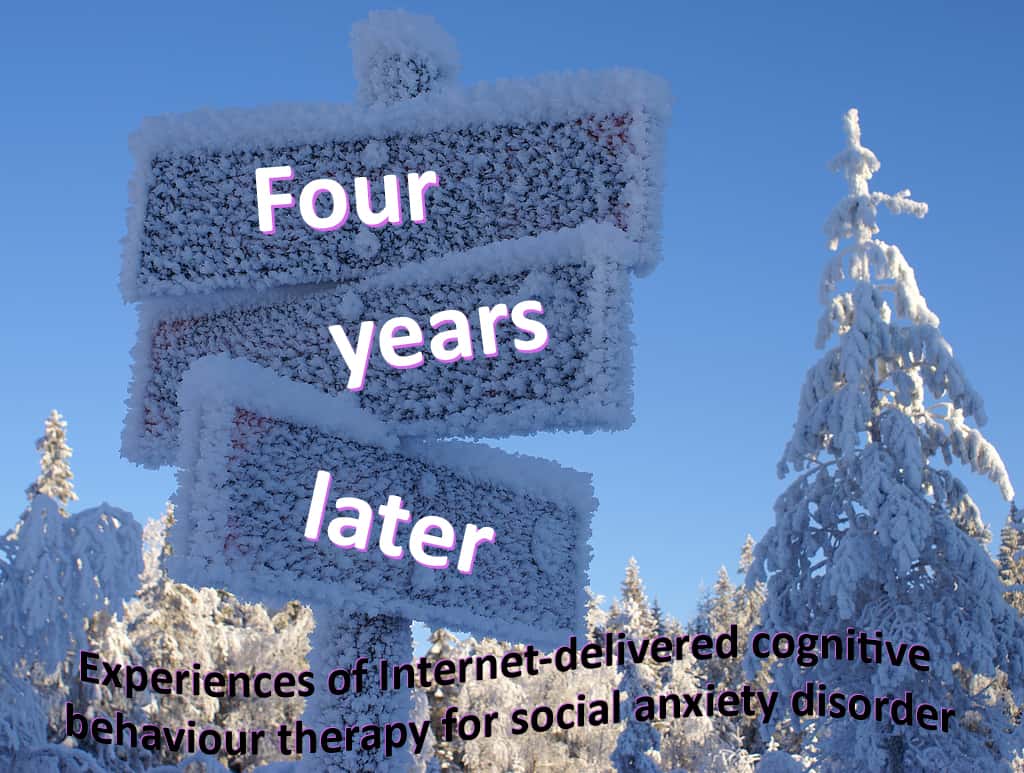Today a new paper was published in the new scientific journal from Elsevier entitled Internet Interventions. The current study was a qualitative follow-up of a study on guided internet-delivered cognitive behavior therapy (ICBT) for social anxiety disorder (formally known as social phobia), conducted four years after treatment completion. The main aim was to capture participants’ description of their experiences of the treatment, their view on treatment effects, memories of the treatment, and whether they continued using the gained knowledge after treatment. Sixty participants were selected from the original study’s treatment group. A criterion based sampling approach was used based on the obtained treatment effect, and with a minimum of five completed treatment modules. E-mail invitations were sent, with information about the follow-up and the instruction to respond if interested in participating. Twelve semi-structured interviews were made and the material was analysed using an approach based on grounded theory. The results showed that all participants found the treatment to have some effect, but they also found it to be demanding, difficult, and hard. Many appreciated to hear of the experiences of other participants in the online forum. Under the theme of memory, most could describe the setup of the treatment in general terms. The exposure module was mentioned by all, cognitive restructuring by most, and some also reported memories of the psychoeducation. A core process was identified which involved how the attained treatment effect was viewed over the time, and how this view changed from treatment completion to current time. The findings outlined in this study describes how treatment effects can be sustained via an active approach to the treatment and the symptoms of SAD.
Read the full paper: Halmetoja, C. O., Malmquist, A., Carlbring, P., & Andersson, G. (in press). Experiences of Internet-delivered cognitive behaviour therapy for social anxiety disorder four years later: A qualitative study. Internet Interventions. doi: 10.1016/j.invent.2014.08.001
